Perspectives for September 2025
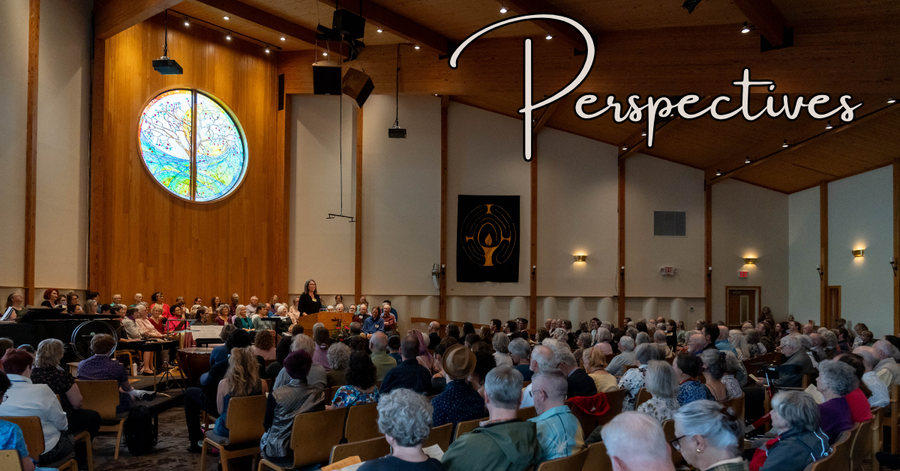
- From Rev. Susan: A Community of Welcome
- Education Matters
- From the Connections Coordinator: Growing Community Through Greeting
- Tech Talks: A Welcoming Website
- From the Board of Directors: A Reflection from Pam MacLaughlin
- Chalice Circles: Fostering a Community of Welcome
- Let's Celebrate Community!
- Rainbow Rights Task Force: Rainbow Rights and Pride for All
- Green Sanctuary Task Force: Potluck and Live-Streamed Talk on September 30
- Homelessness Task Force: How to Love Your Homeless Neighbor
- Upcoming Services
Table of Contents
From Rev. Susan: A Community of Welcome
Welcome to another congregational year at UUCB! It has been a joy to be back at the congregation and leading worship after my summer break. It was a gift to have time away from preaching regularly and to enjoy weekends off and time with family and friends. As the fall approaches, we remember this is a time of beginnings – beginning new academic years of teaching and learning, new schools, new jobs, and a new year of ministry at the congregation. This is also a time when people move into our community and visit the congregation for the first time. Welcome to everyone, and a special welcome to all those who are new, or relatively new to the UUCB.
This year at UUCB, we will be exploring the power and importance of Beloved Community. Beloved Community was a term first coined by 20th century philosopher and theologian Josiah Royce. It was popularized by the Rev. Dr. Martin Luther King, Jr. as he used it to describe his vision of a society marked by peace, justice, love and compassion. A community and society where each person would be supported in growing into the fullness of their personality and where injustices like discrimination, poverty and war would not be tolerated because of the damage these do to individuals and communities. In King’s vision, the foundation for Beloved Community is love and the pathway toward it is through non-violence.
Throughout the year, through our monthly themes, religious education for all ages and Chalice Circles, we will explore themes that are integral to Beloved Community. This month we are focused on welcome and the power of being an inclusive, welcoming religious community that celebrates the gift of each person. One reminder for this month – beginning on Sunday, September 14th we switch to our 2 service Sunday schedule (9:30am and 11:30am) to help make room and welcome all who wish to be a part of our community. We also remember the spiritual work of creating a more open and welcoming spirit as we approach both the joys and the challenges of our lives and our days.
I am reminded of the Persian poet Jalaluddin Rumi’s poem “Guest House” as translated by Coleman Barks:
This being human is a guest house.
Every morning a new arrival.
A joy, a depression, a meanness,
some momentary awareness comes
as an unexpected visitor.
Welcome and entertain them all!
Even if they’re a crowd of sorrows,
who violently sweep your house
empty of its furniture,
still, treat each guest honorably.
He may be clearing you out
for some new delight.
The dark thought, the shame, the malice,
meet them at the door laughing,
and invite them in.
Be grateful for whoever comes,
because each has been sent
as a guide from beyond.
May we deepen and grow our practice of welcome as we seek to understand more fully the Beloved Community.
Yours in love,
Rev. Susan
Education Matters
In religious education programs, everyone is welcome: whatever your age, ability, income, or identities; no matter what your religious background or where you are on your journey.
The idea of welcome is embedded in our Unitarian Universalist faith, currently expressed as our shared value of Pluralism:
We celebrate that we are all sacred beings, diverse in culture, experience, and theology. We covenant to learn from one another in our free and responsible search for truth and meaning. We embrace our differences and commonalities with Love, curiosity, and respect.
To really live this value, we must continuously grow in our understanding of ourselves and each other. We feel welcome when we feel seen and heard; when we feel like our energies, talents, personal characteristics, experiences, and perspectives are valued; when we feel like our joys are celebrated and our concerns are taken seriously. If welcoming entails seeing and hearing another, we must learn skills of centering and deep listening. Valuing people for who they are requires becoming aware of our own biases and learning to think/act differently. Our ability to feel welcome relies on our capacity to see our own worth and our own gifts as valuable and significant. Striving to be a community of welcome is a great path for growth!
An important part of my job is thinking about how to help children and families feel welcome in our congregation. We strive to provide programs that convey the love at the center of Unitarian Universalism and facilitate each person’s growth. But the real heart of our religious education programs for children and youth is our volunteer teachers. Our teachers do the sacred work of connecting with the children on Sunday mornings, learning their names, hearing their joys and concerns, laughing and learning with them, and sharing their perspectives and stories. We currently need four more adults in order to be able to offer all our programs during both services this fall. If you can be one of them, please contact me as soon as possible.
Parents, you can help too, by registering your children. Annual registration helps us know important things about the children in our programs, like their ages, grades, pronouns, and which service they’ll likely attend, so that we can be ready with nametags and the right quantity of materials when they show up on a Sunday morning. For their safety, we want to know their parents’/caregivers’ names, their allergy information, and other health notes. If you’re not sure if you have registered, please email me (kimball@uubloomington.org) or Religious Education Assistant Eric Branigin (ebranigin@uubloomington.org).
Adults, please plan to attend our Adult Religious Education Fair during Community Hour after each service on September 14. There you can learn about this year’s programs, meet the facilitators, ask questions, and sign up for what interests you.
With gratitude,
Stephanie Kimball, Director of Lifespan Religious Education
From the Connections Coordinator: Growing Community Through Greeting
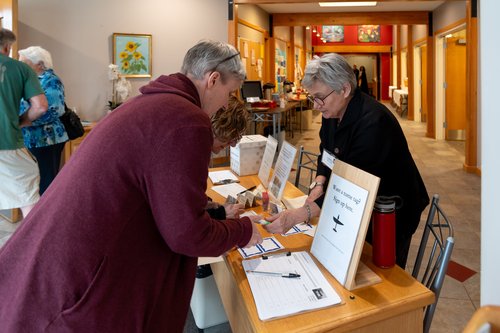
All Sunday morning volunteers contribute to the welcoming nature of our community. The coffee served, classes taught, candles lit, and gardens tended to, among many other things, make for the joyful and inviting atmosphere that compels hundreds of congregants to return Sunday after Sunday. The mission of the Greeters’ group is particularly centered around creating a welcoming environment for the community that arrives through our (many!) doors. Greeters welcome folks at the Portico and Courtyard doors, the main entrance of the Meeting Room, help folks find seats before service (also known as ushering), and help staff the Welcome Table.
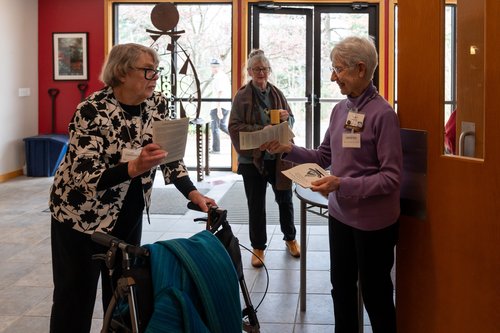
Although we regularly enter countless establishments and venues on our own, being greeted with a smile and welcomed into the building by fellow community members of UUCB reminds us of the friendly, community-oriented, and connection-based nature of this place. As we are reminded during every service; whoever you are, you are welcome here.
If you are interested in helping others feel uplifted and included as they enter our doors, you are invited to register for an upcoming Greeters’ training on Saturday, September 13th. We will cover the basics of each Greeter role, answer questions, take a tour, practice some of the roles, discuss, and enjoy refreshments. All are welcome, whether you are a former Greeter looking for a refresher or completely new to the role. Please register here! With at least four door greeters per Sunday service, in addition to ushers and Welcome Table volunteers, we are an active team always welcoming new participants!
If you are interested in being notified of the need for Greeters on Sunday mornings, please also join the Greeters group on Church Center. Regular reminders and notifications of open spots are sent out through this group.
Whether you are fulfilling an official Greeter role or simply spending your Sunday mornings and afternoons chatting with fellow congregants, thank you for engaging in this community and growing the connections, friendships, and collaborations that are fostered here. Thank you, too, for contributing to a space that welcomes people as they are and provides a safe and nourishing space for us in all of our diversity.
If you have any question about Greeting, or other volunteer roles and groups at UUCB, please send me an email at connect@uubloomington.org
Until next Sunday!
Anabel
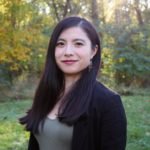
Anabel Watson
Connections Coordinator
connect@uubloomington.org
Tech Talks: A Welcoming Website
As we begin to explore the theme “Community of Welcome” in the month of September, I want to explore some interesting facets of our website – one of the important ways in which we welcome newcomers to our community, as well as being a tool which leaders and staff use in daily work.
This article is divided into sections, each of which will cover a different area of development which I think deserves attention. Here we go!
Accessibility
One of the most important aspects of a website with the intention to welcome all is accessibility. Modern websites should be accessible to all, both because it’s the right thing to do and because (a little-known fact outside of the web development profession) the ADA actually mandates that public websites adhere to a very strict set of accessibility standards. Even so, large swaths of the internet still fail to meet these standards fully. I am pleased with the progress I’ve made in this area through the transition from the old UUCB website, and the ongoing progress as I’ve continued working on the new site over the past few years. I thank the congregation and ministers I’ve worked with for the latitude to really dig in and do the research in order to get this right. Here are some of the points I’ve spent a lot of time refining:
Keyboard Navigation
One of the oldest forms of accessible navigation on the web is the ability to interact with a webpage using only the keyboard, with no mouse. Typically, this is accomplished by using the Tab, Space, Enter, and arrow keys to navigate between buttons, menus, and content. Having efficient and predictable keyboard navigation is especially important for folks who have difficulty using a mouse for any reason (perhaps a lack of fine motor skills, difficulty tracking the cursor as it moves on screen, or any number of other things). For many people, it can be easier to press a few buttons on a keyboard which doesn’t move than to navigate using a mouse. However, due to the incredibly flexible nature of the modern internet, it’s very easy (and common) to build systems which hamper this method of navigation. For this reason, the UUCB website largely avoids more sophisticated and flashy elements, preferring to stick with simpler (and better-tested) standard HTML elements. In the few places where I’ve gone beyond the defaults, I’ve done a lot of work to ensure everything remains navigable without a mouse, following industry best practices to the best of my ability.
Screen Readers
“Screen reader” is a generic term for a program which runs on a computer and reads aloud the contents of the screen in order to facilitate computer use by those who can’t see it, or who have difficulty seeing. This is important technology, and much like keyboard navigation, it’s very easy to accidentally defeat when writing websites.
If you know a little bit about websites, you’ve probably heard of HTML. That stands for HyperText Markup Language, and it’s the set of instructions we use to define how text gets formatted on the internet. HTML (together with Cascading Style Sheets or CSS) defines how the internet looks and feels as we use it. Did you know, though, that beyond looks, HTML also codifies the structure of a page? That’s right: For example, a heading isn’t just larger text, though that’s how we see it. Headings in HTML convey additional information, denoting the start of a new section or subsection of text. For this reason, it is vitally important that we use the different heading sizes in order, don’t skip over any levels, and only use headings when we mean to switch to a new thought or subject – not simply as a way to emphasize text by making it larger. This is only one example; many other HTML elements are also frequently misunderstood, but I don’t have space to write about all of them! The point is that websites can look good to normally-sighted people while being (to use a technical term) semantically incorrect.
Semantically incorrect HTML causes a major issue for accessibility tools such as screen readers, which may read content in a confusing way or not at all. Correctly-written HTML, though, both provides better accessibility and more reliable compatibility with the distraction-free “reading mode” features which are being built into more and more web browsers. In order to ensure as much correctness as possible in this area, the UUCB website
employs two main strategies:
- A relatively limited (and therefore easily audited) set of well-defined formatting options.
- An automatic accessibility checker which informs page editors of potential problems before a page is published.
Text vs. Images
Images can be tricky from an accessibility perspective. Consider someone who can’t see, who browses the internet using a screen reader. Most screen readers simply say “Image” when they get to an image, and really can’t get much more descriptive without some help from the developer. For that reason, each image which communicates something important to the content must specify “alternative text” which will be read out by screen readers and displayed if the image is unavailable for some reason. Per standards and regulations, this alternative text must describe the image in plain english (or whatever language the site is in, which in our case is english) such that someone reading or hearing the text would understand the meaning of the image they can’t see.
Another note on images: In web design, it’s very important that text be text and images be images. Having text displayed as part of an image can be more visually appealing in certain contexts, but it’s very damaging to accessible design. It’s also a nuisance–have you ever tried to copy some text from a webpage, only to discover that you can’t select it because the text is contained within a picture? Keeping text separate from images is important for a whole host of reasons, some of which I’ll list here:
- The reader should be able to change the font, both in size and style.
- Zooming in on websites is important. Most of the time, you want to keep the size of an image small to make the page load faster. If text is contained within the image, that means it’ll be blurry and hard to read when the page is zoomed in.
- Text should be allowed to reflow (wrap around at different points in the paragraph/sentence). This is important when zooming in, but even more so when browsing on a phone or tablet where the screen is physically too narrow to display the same amount of text on a given line.
For all of these reasons, Jo and I have worked together to establish content guidelines for the website which mostly keep text and images separate. It can be difficult, but if we want our website to be welcoming, we need to make do with formatting text in commonly-understood ways that browsers can understand–even if it doesn’t always look as cool.
Contrast
The last accessibility piece which I will mention here is the importance of high contrast for text. The UUCB website mostly uses black text on white (or light gray) backgrounds. That’s good for accessibility, but what about when text is on other background colors? This is another area where responsible web developers must adhere to strict standards. Notice that when you’re on the website, buttons fill in with green when you hover over them (which is another accessibility requirement: clickable elements must change color when hovered over or “focused”). In addition to the background change, though, the text also turns white at the same time. Not only does that look better, it’s also necessary to retain enough contrast for the button’s text to be readable.
Contrast is something that’s mainly checked manually during the development stage of the website, but the automated checker I noted in the previous section will also flag probable contrast issues if they get that far.
Other Welcoming Technologies
While accessibility has been a core focus of the website project from the beginning, there are also other areas which received less initial attention but have received some major upgrades in the last few months. Here are the ones I think are particularly impactful:
Services page overhaul
One of the important ways we welcome both newcomers and long-time members is through publishing upcoming and past services on the website. The worship services page recently received a major overhaul, making it easier to navigate and adding tons of content. Previously, only the last 6 past services were listed. Now, you can browse all the way back to the beginning of Rev. Susan’s ministry here! Additionally, I’ve reformatted the top half of the page to be easier to understand.
Another recent change to how we publish service information is on the home page- previously, only the very next service would be shown front and center. This caused problems, especially for memorial services, which would either displace or be displaced by the same weekend’s Sunday service. Showing the next two services on the front page is a major improvement to welcoming newcomers to our website and our community.
Search
How can a website be welcoming if it’s hard to find what you’re looking for? It can’t! While we do our best to organize the website in a way that makes it easy to navigate, there’s just a lot of content available. It’s not always possible to organize information in a way that absolutely everyone will understand, so a website’s search function is immensely important. Unfortunately, UUCB’s website search was, until recently, extremely lacking. It was finicky to use and frequently failed to find anything at all, much less what you were actually looking for.
On July 28th, I finished a long-running project to completely overhaul the website’s search function. If you haven’t tried it since then, I recommend that you do. It’s far better, and comes with some new options: It’s now possible to search only services, everything other than services, only perspectives articles, or everything other than perspectives articles. Usually, you won’t need any of those options, but there are a lot of both of those kinds of pages on the website (as of the time of this writing, there are 138 services and 317 perspectives articles currently published!). That means it can be quite handy to filter them out.
An aside: Have you ever wondered when the choir sang a particular song, or when we last sang a given hymn? Since orders of service are indexed in the website’s search engine, that’s now easy to find out (as long as the service in question happened since the new website went live). Simply go to the search page, select “search only services”, and enter the name of the song or the hymnal number you’re looking for, and you should get a list of all services where that song appeared. This will also work for readings, sermon titles, and more. The sky is the limit! Note that it’s currently only possible to sort results by relevance. Sorting by date is a work in progress, and will be possible in the future.
Conclusion
One of the major focuses of my job as your Technology Coordinator has always been focused on creating and maintaining a website which is welcoming and useful to all. Progress is always ongoing, and I have some big plans for the future (including an optional dark theme, which I’m guessing some people will be excited for). Thank you for your trust in me as I’ve done this work for the congregation.
From the Board of Directors: A Reflection from Pam MacLaughlin
Last January, the Board did a workshop with UUA representative David Pyle as part of the congregational Start-Up weekend. He provided us with a document listing some common functions of a Board for a religious organization, including being spiritual leaders of the congregation. At our annual retreat in early August, we took some time to explore this idea. What does it mean to be spiritual leaders? How does the Board do this now? How might we do it better in the future?
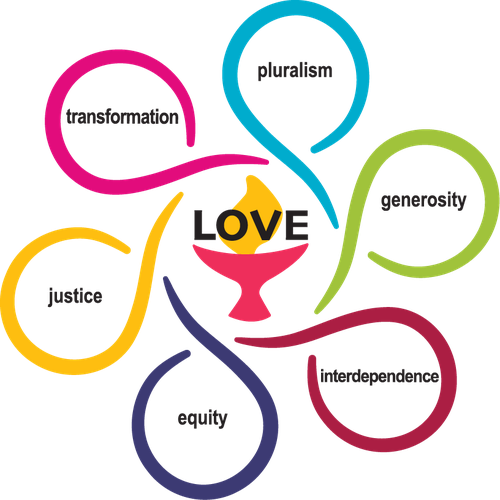
Certainly our UU traditions inform our meetings and our relationships with others. We begin each Board meeting with some chosen words and a chalice-lighting. Do you remember JETPIG? It’s the acronym for our shared values of Justice, Equity, Transformation, Pluralism, Interdependence, and Generosity. We encourage ourselves and members of Board committees to reflect these values and the principles they represent as we draft policies, covenants, and goals.
For example, with the help of the Right Relations Steering Committee, we revised UUCB’s policy on Disruptive/Destructive behavior. We strove to develop a policy that balanced justice with generosity. We wanted to allow respectful exploration of conflict, where all parties would generously seek to understand others’ points of view – those points of view arising out of a pluralism of ideas. And we also defined a structure for the meaningful resolution of conflict, with the end goal being justice for all involved.
Another type of spiritual leadership is facilitating conversations about who we are, and who we want to be, as a congregation. This year the Board has initiated a work group to discern and update UUCB’s mission. Another Board committee has been tasked with holding conversations about a possible name change.
Do you see the Board as spiritual leaders? How do you see our work as Board members intersecting with the spiritual life of the congregation?
-Pam MacLaughlin, Board Member at Large
Chalice Circles: Fostering a Community of Welcome
Before I retired, 11 years ago, I spent 25 years providing professional learning for K-12 educators. I was always looking for ways to arouse the heart and passion of teaching, and when my November 2002 Oprah Magazine arrived, there was a one page photo and explanation of the concept of ubuntu. I immediately latched on to this idea and how it might be incorporated into how schools, classrooms, teachers and students could interact in more meaningful ways. I made colored copies of the page and began including it in training for years. The definition shared in this publication included: “Ubuntu is very difficult to render into a Western language. It speaks of the essence of being human. It is to say my humanity is caught up, is inextricably bound up in yours. We belong in a bundle of life. I am human because I belong, I participate, I share.” When I think of what Chalice Circles provide in the life of this growing UUCB community, it seems to me that ubuntu is at their heart.
I have participated in five Chalice Circles over the past 10 years, each one unique and with its own personality…if a group can have a personality. Each one allowed me to meet and truly get to “know” the others in ways that can seldom happen in Fellowship Hall or a meeting or even while working with a social justice task force. While a participant totally decides what they share, I’ve heard joys, sorrows, fears, triumphs, losses, hopes, regrets, dreams, and failures via funny stories, tales of youth, and heartfelt memories. I’ve cried and laughed along with the speaker, but mostly I’ve listened. I haven’t given my advice, though it was sometimes on the tip of my brain. I haven’t responded with “oh that happened to me too.” All that was shared enabled me to walk in that person’s shoes for a short period of time, enlarging my view of who they are. And the opportunity for me to share my own thoughts and feelings provided me with deeper reflection and new insights.
Once hearts and minds have connected in that way, there is often a bond that remains far beyond the duration of that Circle…for months and years. When I see people in church who have been in my Chalice Circles, I see them differently. I actually have a heart connection and our “how are you” or a quick hug or handshake has a deeper meaning. This connection reminds me of the Neil Diamond song, Heartlight, written after he saw the movie E.T. In the movie, the relationship between the little boy and E.T. meant that when their fingers touched an actual light glowed. So, for me, participating in Chalice Circles ignites ubuntu--a feeling of belonging, of seeing and being seen that is seldom experienced in other aspects of our lives outside of families. UUCB and Chalice Circle participation help to instill a sense of hope and connectedness in these extremely challenging times.
-Debbie Fish
Let's Celebrate Community!

Join The UU congregation for a celebration of beginning another church year together! On Sunday, September 7th the church is supplying BBQ meat and jackfruit (vegan) for a pitch-in picnic after the 10:30 a.m. service. We hope that you will attend. Sign up here to tell us what side dish you might bring! There will be games for all ages and an ice cream bar with toppings! Please don't miss the fun! If you have questions or would like to help, contact one of these organizers: Christine Banister, Ann Kamman or Linda Pickle.
Rainbow Rights Task Force: Rainbow Rights and Pride for All
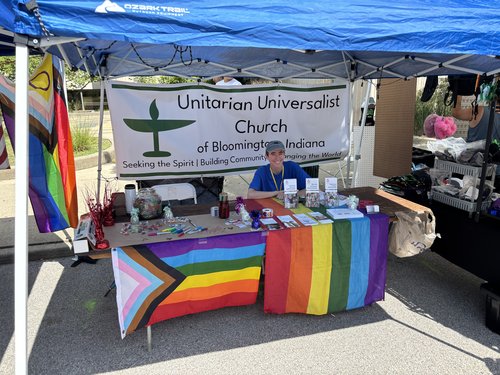
Both togetherness and otherness; community and individuality.
We state on our church’s website: “In Unitarian Universalism, you can bring your whole self: your full identity, your questioning mind, your expansive heart. Together, we create a force more powerful than one person or one belief system. As Unitarian Universalists, we do not have to check our personal background and beliefs at the door: we join together on a journey that honors everywhere we’ve been before. … Whether in community with others or as an individual, we know that active, tangible expressions of love, justice, and peace are what make a difference.”
It's not always easy holding opposites in balance. The tendency is for one to dominate the other with the shift to dominance often slow and subtle. Sameness is comfortable—controllable. But the struggle to pull things back into equilibrium and honor diversity is long and hard with lots of resistance.
Diversity in sexual identity and expression is as old as creatures themselves. It has been observed and documented throughout the animal kingdom over time. It has always been so in humans, too. The Kinsey Institute right here in Bloomington has done germinal scientific research in the field of human sexuality for decades. It’s the human community with a diversity of individual expressions and identities.
At the Unitarian Universalist Church of Bloomington, we are committed to honoring diversity within community and exploring ways in which we can celebrate our individuality within community. That’s why our presence at the local Pride festivals is so important. We affirm the positive messaging of Pride: that it is for everyone. Everyone is invited to show up as they are and know whatever that expression is, it is good. We want folks to know they are welcome at UU just as they are. The UU embrace is wide, warm, and welcoming. The Bloomington Pridefest was last Saturday, and the festival in Spencer will be on Saturday, October 4. This will be another opportunity for UU folks to table at the celebration and share our warm welcome in person with those attending. (More announcements about how and when to sign up will come in the Friday update and after service)
Another opportunity this fall is the three-part series called Transgender 101. This will be an opportunity for folks to hear about the science and research about transgender identity from a Kinsey Institute professional, Dr. Stephanie Sanders. Then we’ll survey the legal and political landscape around transgender care and rights, which is fraught with disinformation and campaigns to whip up fear and drive a wedge between people for political gain. And as a result, we will consider what we at UU can do locally to respond and make a difference in supporting our trans friends, neighbors, and others affected by these attacks. You can sign up for this series now here: https://uucb.churchcenter.com/registrations/events/3066967
And as always, if the area of LGBTQIA+ rights appeals to you—something you feel called to help with—please consider joining the Rainbow Rights Task Force and help us shape and expand our efforts to be visible and effective in celebrating, promoting, and defending human rights and dignity as it relates to sexual orientation, expression, and identity. Here’s the link to explore this further: https://www.uubloomington.org/justice/social-justice-task-forces/rainbow-rights-task-force/
-Carl Deitchman, Rainbow Rights Task Force Co-Chair
Green Sanctuary Task Force: Potluck and Live-Streamed Talk on September 30
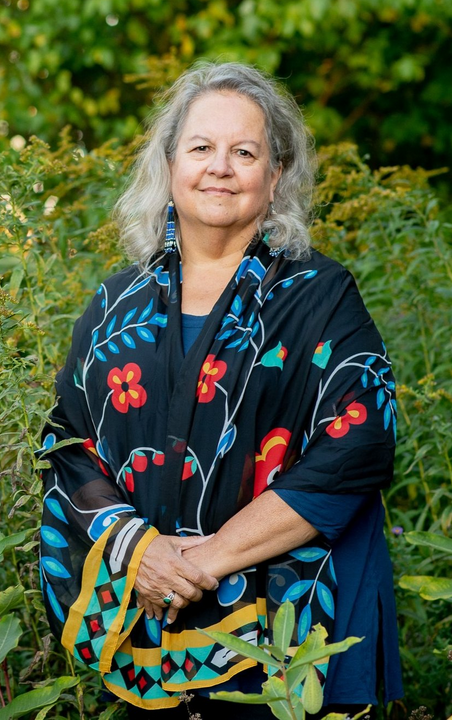
Please join the Green Sanctuary Task Force and members of Earth Care Bloomington and the Bloomington Multi-Faith Alliance to hear a live-streamed talk by Robin Wall Kimmerer, renowned Native American botanist, educator, and author, to discuss her new book The Serviceberry: Abundance and Reciprocity in the Natural World. This is the keynote address for Faith in Place’s Annual Environment & Spirituality Summit.
The talk will be preceded by a vegetarian potluck dinner for UUCB members & friends at 6:00 PM.
When: Tuesday, September 30th
Doors open: 5:45
Potluck: 6:00 to 7:00 PM
Talk, 7:30 to 8:30, followed by a Q&A and discussion
Where: Fellowship Hall (please use the courtyard entrance)
RSVP: If possible, please let us know if you plan to attend the potluck & talk: Zero.GSTF@uubloomington.org
Author of the award-winning bestseller Braiding Sweetgrass, Dr. Kimmerer will guide us toward a future where gratitude shapes our relationship with each other and the living world. She will invite us into a deeper contemplation of the reciprocal support and strength shared between humans and the natural world. Our faith teaches us to care for those in need. What can we learn from the natural world, indigenous societies, and a world view based on abundance and interdependence?
-Molly O'Donnell, Green Sanctuary Task Force Co-Chair
Homelessness Task Force: How to Love Your Homeless Neighbor
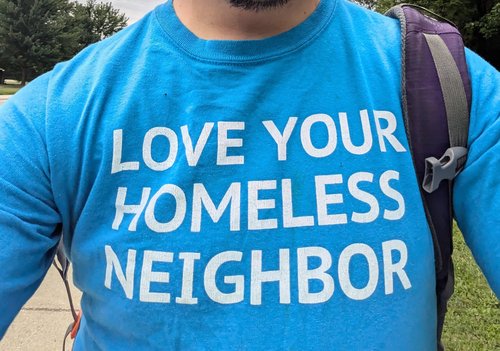
On July 24, 2025, the Trump Administration signed an executive order aimed at “Ending Crime And Disorder On America’s Streets.” Among the many details of this order, the new regulations defund programs aimed at housing and rehabilitation in exchange for imposing tighter restrictions and more punitive measures for individuals seeking to overcome poverty and its concomitant conditions–including mental health struggles, substance use disorder, and a range of states of artificial scarcity included within the term of ‘vagrancy.’ In many Christian circles–as well as critics of Christian traditions–people often point to the Parable of the Good Samaritan to talk about the call to “Love your neighbor [as yourself].” Furthermore, the French philosopher, Paul Ricœur, makes the point in Oneself as Another that we should not think of ourselves as passive neighbors but only neighbors insofar as we make ourselves neighbors to one another.
In our faith tradition in which we affirm love as the center, it is imperative that we all act in ways that offer ourselves in the service of Others–especially those in greatest precarity. The Homelessness Task Force answers this criminalization of homelessness with renewed calls to support all of our neighbors through active forms of centering love. We pledged as a congregation to oppose this by supporting Beacon’s capital campaign, and you can do so directly by donating here <https://www.uubloomington.org/justice/uu-campaign-for-beacon-center/>. Additionally, our Affiliated our Community Minister, Rev. Forrest Gilmore, will speak more on this in the service on September 14. In the meantime, we promote the following ways to get involved in combatting the conditions that harm some people more than others, including the following:
- Volunteer at Shalom - The most direct and immediate way to show love in Bloomington is by volunteering time to help at Shalom Community Center. With opportunities to help cook in the kitchen or volunteer at the hospitality desk helping guests meet their basic needs and access the services offered at the center. You could also serve as a Job Search Coach helping job seekers at Shalom to assist with online job searches, resumes, and submitting applications. Lastly, donations Organizers assist with sorting and organizing donations of clothes, hygiene products, blankets, and towels.
- Volunteer at Friend’s Place Shelter - Volunteers are needed to work at the overnight shelter from 5 to 7 pm to help support staff for the busy first two hours of the shelter opening.
- Volunteer as a driver - Bagel and/or donut pick up and delivery to Phil’s Kitchen at Shalom by 7:30 am.
- Goodwill Delivery – Weekly pick up of unneeded donation items from Shalom to take to Goodwill.
- Recycling Delivery – Weekly pick up of Shalom Center recyclables and delivery to County Recycle Center
- Hoosier Hills Shoppers – Coordinate with Phil’s Kitchen Chef to pick up food at Hoosier Hills Food Bank.
- Donate Money - Beacon accepts credit card, Paypal, cash, or check
- Donate Nonmontery Gifts - In addition to money, Beacon accepts donations of publicly traded stocks, bonds, and mutual funds. They also will accept a car or other vehicle you’d like to donate for a tax deduction.
- Designate Your Kroger® Plus Card To Beacon - You can use your Kroger Plus card to dedicate a percentage of your purchases to support Beacon. This is absolutely free and costs you only the time to sign up.
- Come Support the Concert
On October 4th, we will be hosting a benefit concert for Beacon at the church with several local artists and an update on our progress towards our commitments to supporting Beacon’s Light the Way campaign. If you want to hear more about how we’re Building Community and Changing the World as a task force and congregation, this is one event you won’t want to miss!
Building community is not simple, and addressing the root causes of homelessness are not easy, but we are working together to make another world–a world that is more diverse, equitable, and inclusive. With your help, the possibilities for holding love at the center are not just potentially achievable, but actually welcoming to all.
For more information on getting involved, visit https://beaconinc.org/how-you-can-help/#volunteer or contact the co-chairs Mary Blizzard, Christine Banister, and Jason Michálek with this contact form.
Upcoming Services
Two Services at 9:30 a.m. and 11:30 a.m. begins September 14
Friday, August 29, 2025 - 2 p.m. in Fellowship Hall
Celebration of Life Gathering for Tom Albright
A Celebration of Life Gathering for Tom Albright will be held on Friday, August 29, at 2 p.m. in Fellowship Hall.
September 7, 2025 - 10:30 a.m.
All Ages Ingathering Water Communion Service
Rev. Susan Frederick-Gray
Everyone is invited to bring water from a place that is meaningful to them in their life to share in this service. We remember that these gifts of water are reflective of who we are, of our connection and dependence on water for life. In the service as we pour our waters together, we remember how the sharing of our lives in community creates depth and meaning.
Church Picnic in Fellowship Hall and the playground following the service. All are welcome!
September 14, 2025
Rev. Forrest Gilmore
Rev. Forrest Gilmore is UUCB’s Affiliated Community Minister. He served congregations for ten years as a parish minister and now is the Executive Director of Beacon, Inc, a local nonprofit dedicated to people experiencing extreme poverty. Forrest is a native New Yorker, but has called Bloomington home for over thirteen years. He's a graduate of Cornell University and Starr King School for the Ministry.
September 21, 2025
Creating a Culture of Welcome
Rev. Susan Frederick-Gray
How do we create a culture of welcome in our community and in our own lives?
September 28, 2025
The Spiritual and Justice Work of Welcome
Rev. Susan Frederick-Gray and Rev. Mary Katherine Morn
Join us as we welcome the Rev. Mary Katherine Morn, President and LEO of the Unitarian Universalist Service Committee – our UU International Human Rights Organization. UUSC works to advance human rights with an international community of grassroots partners and advocates. They work on issues of defending human rights at risk due to criminalization and systemic oppression of people based on their identity. They support self-determination and defend the rights of people displaced due to climate, conflict or economic hardships; and they respond to humanitarian crises as partners with people whose access to aid is most limited.